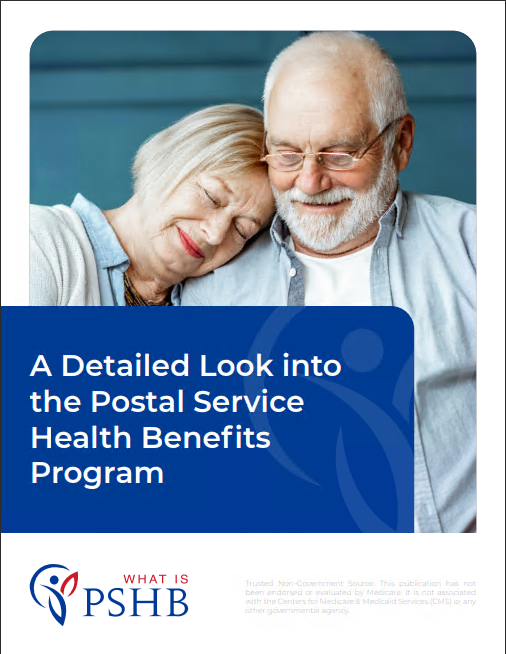Key Takeaways
-
Many USPS employees and retirees may mistakenly believe they are automatically enrolled in the Postal Service Health Benefits (PSHB) Program—this is not always the case.
-
Missing the proper enrollment window or misunderstanding your eligibility could result in losing coverage or benefits, especially if you are Medicare-eligible.
The Shift to the PSHB Program in 2025
The Postal Service Health Benefits (PSHB) Program officially replaced the Federal Employees Health Benefits (FEHB) Program for USPS employees and retirees starting January 1, 2025. While this shift brings new features and integration with Medicare, it also creates potential for confusion—especially if you assume your enrollment status is already squared away.
You should not take your coverage for granted. In 2025, all USPS employees and annuitants must confirm their PSHB enrollment status, particularly if they are Medicare-eligible or were previously covered under someone else’s FEHB plan.
What Enrollment Looks Like in 2025
Enrollment under PSHB differs from FEHB in a few major ways. Here’s how it works:
-
Automatic Enrollment: If you had FEHB coverage as of December 31, 2024, and are still eligible, you may have been automatically enrolled in a corresponding PSHB plan.
-
Required Action for Some: Automatic enrollment doesn’t apply to every situation. You are responsible for ensuring your information is up to date and that your Medicare status aligns with PSHB requirements.
-
Enrollment Platforms: USPS employees must use LiteBlue, while annuitants must check KeepingPosted.org or contact OPM.
Don’t Rely on Assumptions—Check for These Common Gaps
Even if you think you’re covered, several situations may leave you unprotected unless you take specific action:
1. You Were Covered Under a Spouse’s FEHB Plan
If your coverage in 2024 came through a spouse who worked for a non-USPS federal agency, you were likely not auto-enrolled into a PSHB plan. You need to proactively enroll in a plan under the PSHB system to avoid losing coverage in 2025.
2. You’re Medicare-Eligible and Haven’t Enrolled in Part B
Certain Medicare-eligible retirees and family members are required to enroll in Medicare Part B to maintain PSHB coverage. Failure to enroll, unless you qualify for an exemption, can cause termination of drug coverage and higher out-of-pocket costs.
Exemptions include:
-
You retired on or before January 1, 2025
-
You are a current employee aged 64 or older as of January 1, 2025
-
You live outside the U.S.
-
You receive VA or Indian Health Service benefits
3. You Didn’t Review Your Plan During Open Season
The 2024 Open Season ran from November to December. If you didn’t review your plan options or make updates during this window, you may have been auto-enrolled in a plan that doesn’t meet your needs. Double-check that your benefits, provider networks, and coverage tiers still align with your situation.
Medicare Integration: Why It Matters
The PSHB Program is integrated with Medicare in a way that encourages dual enrollment. If you’re 65 or older and eligible for Medicare, you should:
-
Enroll in Part B if required, to keep full access to PSHB benefits.
-
Understand that your PSHB plan may offer lower deductibles, waived cost-sharing, or other enhanced benefits when you’re enrolled in both Part B and your PSHB plan.
Additionally, prescription drug coverage under PSHB includes a Medicare Part D Employer Group Waiver Plan (EGWP). This comes with:
-
A $35 monthly cap on insulin
-
A $2,000 out-of-pocket maximum for drugs in 2025
If you opt out of this drug coverage, you cannot re-enroll later unless you experience a qualifying life event.
What If You’re Not Sure You’re Enrolled?
If you’re unsure about your enrollment status, don’t wait for a problem to appear. Here’s what you can do:
-
Employees: Log in to LiteBlue and review your current plan status.
-
Annuitants: Visit KeepingPosted.org or contact the OPM Retirement Information Office.
-
Call for Help: The PSHB Navigator Help Line (1-833-712-7742) is available to assist with enrollment questions.
Missed Open Season? Here’s What Happens Next
If you missed the Open Season in late 2024 and were not automatically enrolled, you may still have options:
-
Qualifying Life Events (QLEs): These allow changes outside the Open Season. Events include marriage, birth, divorce, or loss of other coverage.
-
Medicare Special Enrollment Period: Between April 1 and September 30, 2024, Medicare Part B had a Special Enrollment Period for those required to enroll under PSHB rules. If you missed this window and are not exempt, act quickly to avoid penalties or coverage disruption.
What to Expect from PSHB Plans
Each PSHB plan differs in cost-sharing and network access, but here are some general features you should look for:
-
In-network care: Lower deductibles, coinsurance (10%-30%), and copayments ($20-$75 depending on services).
-
Out-of-network care: Higher cost-sharing (40%-50%), and higher deductibles.
-
Deductibles: Range from $350–$500 for low-deductible plans, and $1,500–$2,000 for high-deductible plans.
-
Out-of-pocket maximums: $7,500 for Self Only, and $15,000 for Self Plus One or Self & Family.
Check your plan brochure for exact figures.
Don’t Forget Other Federal Benefits
PSHB enrollment does not affect your eligibility for:
-
FEDVIP (Dental and Vision)
-
FEGLI (Life Insurance)
-
FSAFEDS (Flexible Spending Accounts)
-
FLTCIP (Long-Term Care Insurance) — note that enrollment is still suspended for new applicants
However, if you depend on your PSHB enrollment to coordinate with any of these, double-check that your coverage aligns with your expectations.
PSHB Enrollment is Not a One-Time Event
Your responsibilities don’t stop after 2025. You’ll need to:
-
Review your plan annually during Open Season (November–December)
-
Keep Medicare enrollment up to date
-
Notify the system of life events that change your eligibility
Failing to act could result in being locked into a less suitable plan until the next Open Season.
Make Sure You’re Actually Covered
The PSHB transition affects nearly every USPS employee and retiree, but that doesn’t mean your situation has been handled automatically. Whether you’re a retiree wondering about Medicare requirements or an employee relying on spousal coverage, the risks of assuming you’re enrolled are too high to ignore.
Verify your status. Revisit your options. And if you need guidance, speak with a licensed agent listed on this website to walk you through your choices with clarity and confidence.


















